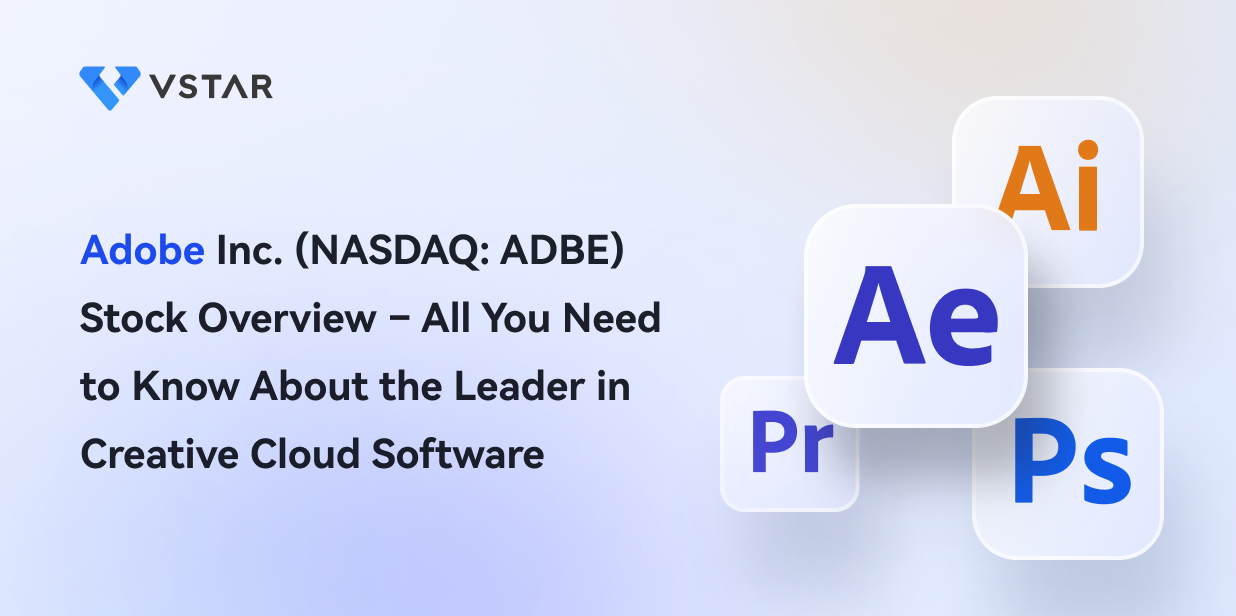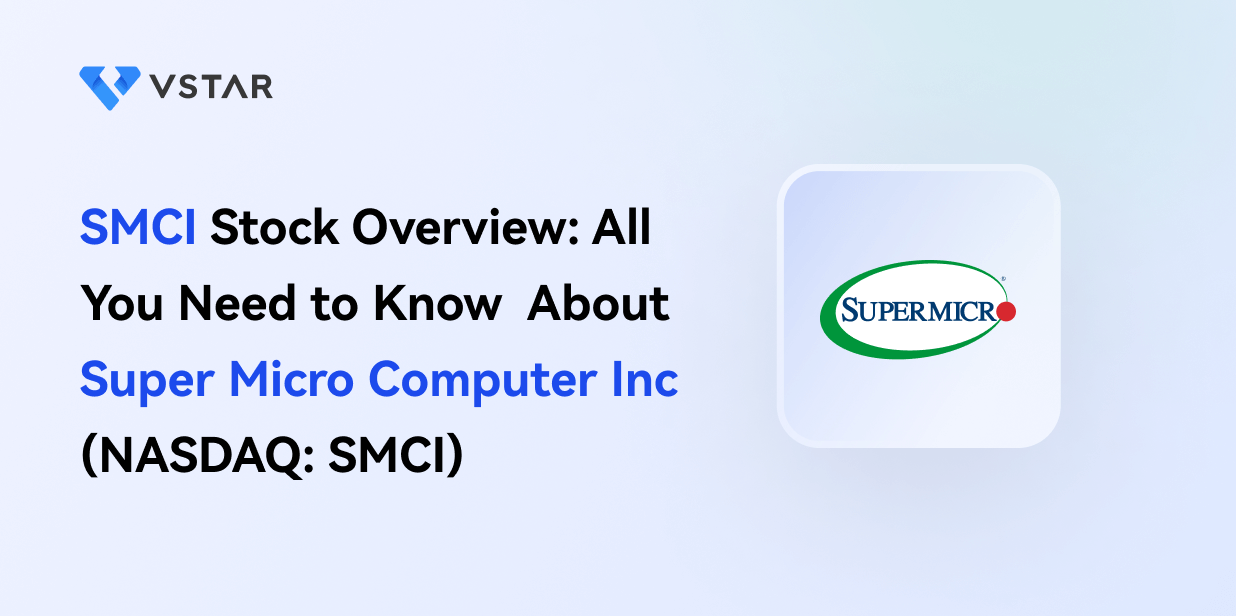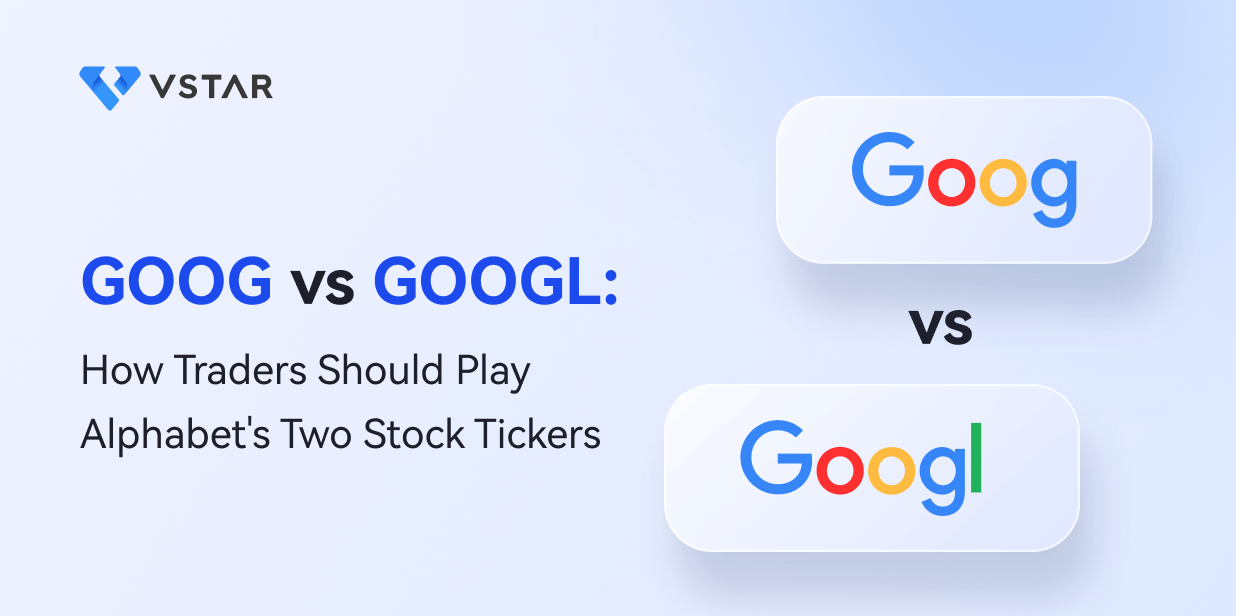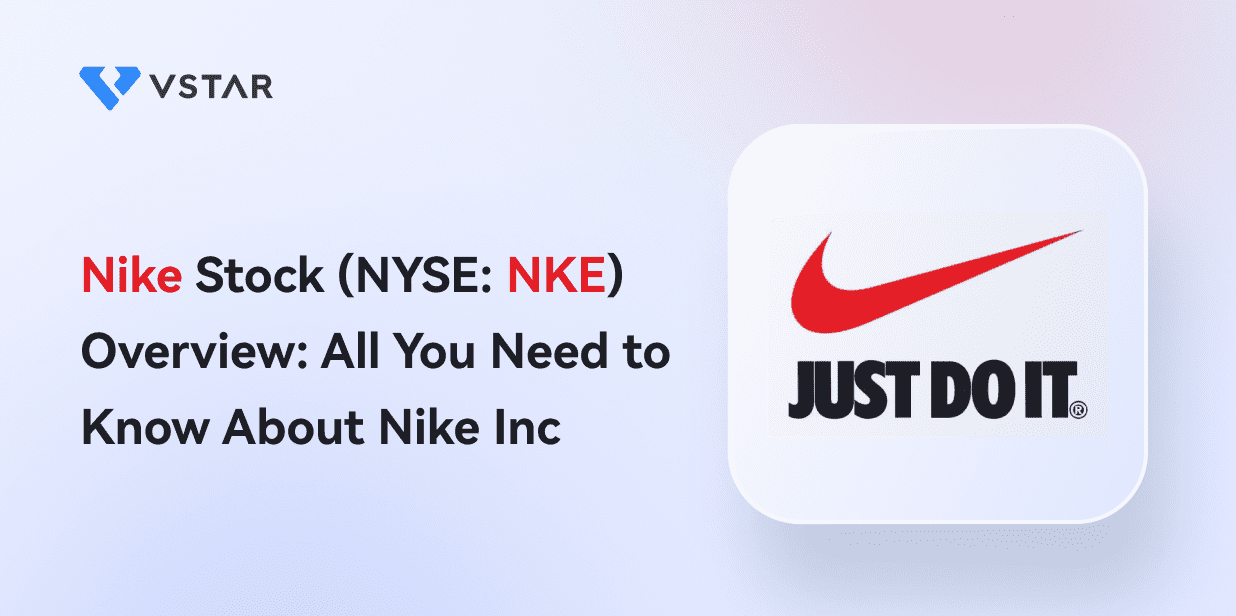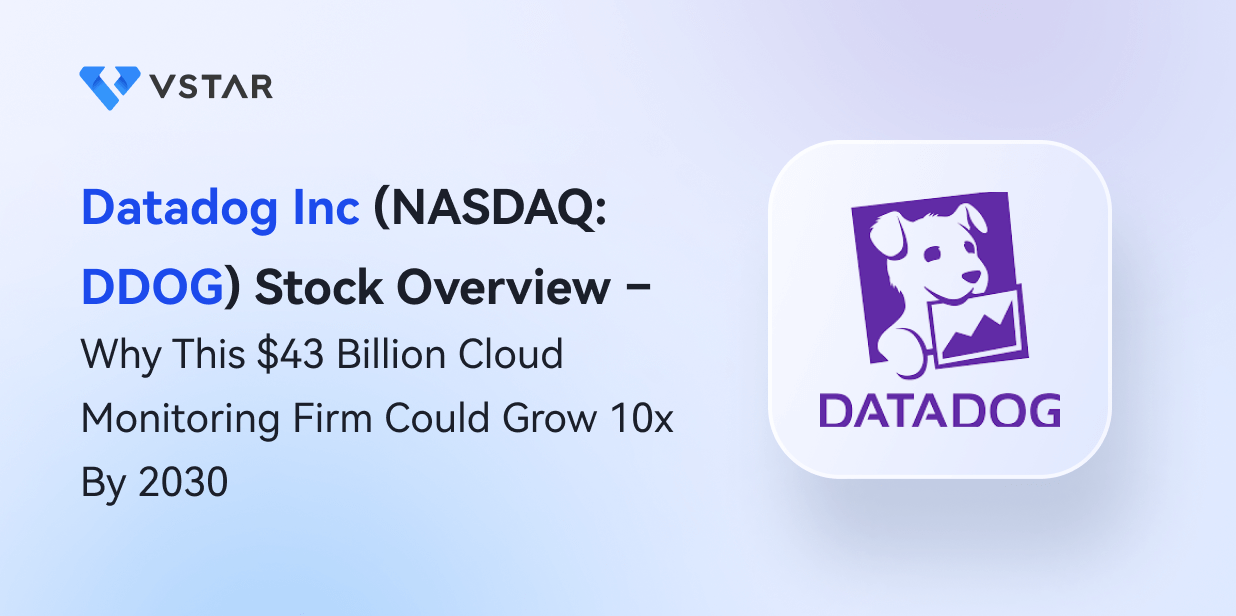Have you always heard of Adobe but do not know how to go about the stock? Do you have a vested interest in the investment of Adobe, a preeminent software corporation of global renown? Adobe has garnered widespread recognition for its ubiquitous software offerings, including but not limited to Photoshop and Acrobat, and has demonstrated consistent expansion throughout its history. Within the confines of this article, we shall delve deeper into the performance of Adobe's stock, conduct a thorough analysis of its future prospects, discern potential hazards and advantageous circumstances, and examine various avenues for investing in Adobe stock.
I. Adobe Inc.'s Overview
In 1982, John Warnock and Charles Geschke established Adobe Inc. The company’s headquarters are in San Jose, California, and the current CEO is Shantanu Narayen. Adobe has a $159.811 billion market worth as of May 2023 and generates net income of $4.756 billion.
The introduction of Adobe Photoshop in 1990, the launch of Creative Suite in 2003, the move to a subscription-based model with Creative Cloud in 2013, and the purchase of Marketo in 2018 to expand its digital marketing capabilities are just a few of the many significant events in Adobe's history.
The present organizational framework of Adobe comprises three primary divisions; Digital Media, Digital Experience, and Publishing. The Digital Media segment includes Creative Cloud and Document Cloud, which offer users a suite of tools to create, manage, and distribute digital content. The Digital Experience segment comprises Adobe Marketing Cloud, Adobe Advertising Cloud, and Adobe Experience Cloud, which are designed to assist enterprises in establishing and overseeing their online presence. The Publishing segment comprises Adobe Acrobat, a software application that enables users to generate and distribute PDF documents. Mr. Shantanu Narayen has been serving as the Chief Executive Officer of Adobe since 2007, and has played a pivotal role in propelling the company's expansion and advancement.

II. Adobe's Business Model and Products/Services
A. Business Model
Adobe offers subscription-based creative and document cloud software to a wide range of customers, including individuals, businesses, governments, schools, and other organizations across the globe. Adobe has been operational for a period exceeding 38 years and has undergone a transformation of its business strategy over the years. In recent times, Adobe has transitioned from conventional licensing fees to a subscription-based model. This move has been fruitful in generating recurring subscription fees for cloud-based services.
The core of Adobe's business strategy, however, is centered on offering software solutions and services that facilitate the creation and management of digital content. The primary demographic that this product targets are creative professionals such as graphic designers, video editors, photographers, and web developers. However, it also offers solutions for enterprise and government clients.
This particular model offers customers access to a diverse range of applications, such as Photoshop, Illustrator, InDesign, Premiere Pro, and Acrobat, alongside other services such as cloud storage, file sharing, and collaboration tools.
B. Products and Services
Adobe's suite of software products encompasses a diverse array of creative and business requirements, comprising:

Adobe's flagship suite of creative applications is Creative Cloud, which caters to graphic design, video editing, web development, and other creative requirements.
Document Cloud is a collection of software tools designed to assist both individuals and businesses in securely managing and sharing PDF documents.
The Experience Cloud is a suite of tools designed to enable businesses to effectively manage their digital customer experiences. Its features include web analytics, personalization, and marketing automation.
Adobe is also making significant investments in AI and machine learning technologies. Its offerings include Sensei, a machine learning framework, and Neural Filters, which leverage AI to automate intricate editing tasks.
Recently, Adobe has also announced its foray into the Metaverse world by its acquisition of Mixamo and Allegorithmic which allows its users to experience an encompassing design experience. Users will be able to make more immersive virtual designs with this latest development using an array of creative tools in the Metaverse.
III. Adobe's Financials, Growth, and Valuation Metrics
A. Review of Adobe's financial statements
Over the past five years, Adobe has demonstrated robust revenue growth, achieving a whopping revenue of $17.61 billion in 2022. The revenue growth represents a year-over-year (Y/Y) growth of 11.54%. This impressive growth can be attributed to the company’s diversification into other fields like the Metaverse and the industry growth. However, In the corresponding year, Adobe's net income experienced a decline of 1.37%, totaling $4.76 billion. The net profit margin of Adobe also experienced a decline of about 11.59%. This happened when Adobe was stopped in the acquisition of Figma.
Adobe's cash from operations (CFFO) for the year 2022 amounted to $7.84 billion, indicating an 8.41% growth from the preceding year. This means that Adobe's sales was more profitable compared to the previous year. However, Adobe's cash flow from investing activities also declined by 83.88%, resulting in a negative value of -$570.00 million. This shows that Adobe's investing activities into potential investment was unyielding. Similarly, the cash flow from financing activities decreased by 58.68% to -$6.83 billion which shows that Adobe was able to successfully cut its expenses. But, Adobe's net cash flow increased by $392.00 million, reflecting a growth of 161.83%. Adobe's free cash flow amounted to $6.27 billion, a crucial metric for investors as it signifies the cash that can be utilized for dividends, share buybacks, and acquisitions.
Adobe's balance sheet exhibits financial stability, with a total of $6.10 billion in cash and short-term investments and a total asset value of $27.17 billion. The aggregate liabilities were recorded at $13.11 billion, whereas the total equity amounted to $14.05 billion. The financial metrics for Adobe indicate a return on assets (ROA) of 14.01%, meaning that the organization produces $0.14 in profits for each dollar of assets. And a return on capital (ROC) of 19.98% suggests that the company is generating substantial returns on its investments.
With regards to valuation metrics, it can be observed that Adobe has a price to book (P/B) ratio of 11.46, which is comparatively high in relation to the industry average. This suggests that the market has a positive outlook on the company's potential for future growth. In 2022, Adobe experienced a 9.86% growth in its earnings per share (EPS), resulting in a value of $13.71, indicating a favorable outlook for investors.
B. Important financial ratios and metrics
During the analysis of Adobe's financial performance, it's important to check the important financial ratios and key metrics.
Here are some important ratios and metrics to consider:
Revenue Growth: Adobe has demonstrated strong revenue growth over the past years, with a 5-year CAGR of 15.3%. This compares favorably to some of its closest peers, including Microsoft(12.3%), Apple(6.2%), and Amazon (30.9%). This shows that Adobe's revenue growth is higher than Microsoft and Apple but lower than Amazon's revenue growth.
Earnings Growth: Adobe's earnings growth has also been consistently good, with a 5-year earnings CAGR of 19%. This outpaces all of its closest peers, including Apple (12.6%) and Alphabet ( 17.6%).
Forward P/E Ratio: Adobe's forward P/E ratio (based on estimated earnings for the past 12 months) is around 24x. This is slightly lower than Apple's 28x and Alphabet's 34x.
Based on the analyses of Adobe’s growth potential above, we think Adobe stock is currently undervalued.
IV. Adobe Stock Performance
A. Adobe Trading Information:

Primary exchange and Ticker: Adobe went public on August 13, 1986, and has been trading on the NASDAQ stock exchange with the ticker symbol ADBE.
Country & Currency: Adobe is headquartered in the United States and trades in US dollars (USD).
Trading hours; Pre-market; After-market: The NASDAQ stock exchange is open from 9:30 a.m. to 4:00 p.m. Eastern Time, Monday through Friday. Pre-market trading starts at 4:00 AM and goes until 9:30 AM, while after-market trading takes place from 4:00 PM to 8:00 PM.
Stock Splits: Adobe has undergone a total of six stock splits in its history, with the most recent one occurring on May 24, 2005. One ADBE share bought prior to March 12, 1987, would equal 64 ADBE shares today.
Dividends: Adobe has not paid any dividends since it went public in 1986.
Latest Developments Investors/Traders Should Note
In recent years, Adobe has been expanding its product offerings and investing heavily in emerging technologies like artificial intelligence (AI) and the metaverse. In April 2023, Adobe announced major new innovations to its video tools, including the expansion of its Frame.io collaboration platform beyond video. Adobe also partnered with Prada Group to reimagine in-store and digital experiences in real-time using AI-powered tools. Additionally, Adobe unveiled a new family of creative generative AI called Firefly, which is expected to enhance the capabilities of its creative software suite. These developments highlight Adobe's commitment to staying at the forefront of the technology industry and continuing to innovate in order to maintain its competitive edge. Investors and traders should monitor Adobe's product developments and partnerships closely as they may impact the company's future growth prospects and stock performance.
B. Overview Of Adobe Stock Performance
The financials and products of Adobe have exhibited remarkable growth over the years, leading to a strong performance of the company's stock. As of May 8, 2022, Adobe's market capitalization exceeded $156 billion. The organization's equity has exhibited a track record of consistent expansion, punctuated by intermittent declines that were promptly succeeded by recoveries.
Over the course of the last five years, Adobe's stock price has exhibited notable growth, rising from approximately $175 per share in May 2017 to exceeding $567 per share in December 2021. During the previous year, the stock has exhibited a consistent upward trajectory, with a nadir of approximately $336 per share in December 2022. As of May 8th, 2022, the stock is being traded at approximately $342 per share.
Numerous investors and analysts have expressed a positive outlook on Adobe's future, citing the company's robust financials and potential for growth as factors contributing to a favorable assessment of the stock's performance. The organization has consistently surpassed revenue and earnings projections, and has exhibited a dedication to broadening its product portfolio and investing in emerging technologies such as AI and the metaverse.
Apart from its financial performance, Adobe's stock has also experienced an upswing due to favorable sentiment surrounding the company's sustainability endeavors. These include its pledge to decrease its carbon footprint and attain carbon neutrality by 2025. These endeavors have garnered the attention of socially conscious investors, who are progressively seeking out organizations that prioritize sustainability and environmental responsibility.

C. Key Drivers Of Adobe Stock Price
There are several significant factors that impact the pricing of Adobe stock, which include:
The growth in revenue and earnings is a significant factor in determining the stock price of Adobe. Investors closely monitor the company's capacity to maintain steady growth in revenue and earnings across its primary business segments, as well as its ability to broaden its range of products and services.
The general market sentiment towards technology stocks can exert a substantial influence on the stock price of Adobe. Investor sentiment towards the company can also be influenced by market conditions, such as interest rates and geopolitical events.
The capacity of Adobe to innovate and create novel products and services is a crucial factor that influences its stock price. Investors are expected to closely monitor the company's investments in emerging technologies such as artificial intelligence, cloud computing, and the metaverse in the upcoming years.
The competitive environment within the software industry may have an effect on the stock price of Adobe. Competing firms, such as Microsoft and Salesforce, are consistently striving to acquire a larger portion of Adobe's primary markets. Any noteworthy alterations in the competitive environment may affect investor attitudes towards Adobe.
D. Analysis of Future Prospects for Adobe Stock
Adobe holds a prominent position in the digital media and marketing sector, and its business model, which is based on subscriptions, offers a reliable and consistent source of recurring revenue. Adobe has consistently achieved robust financial outcomes, characterized by double-digit revenue expansion, margin enlargement, and favorable cash inflows. In addition, Adobe's strategic emphasis on innovation has allowed it to sustain a competitive advantage and create novel products and services that address the changing demands of its clientele.
Looking towards the future, Adobe's growth potential appears favorable as Adobe persists in allocating resources towards domains such as artificial intelligence, machine learning, and the Metaverse. The Metaverse presents a substantial opportunity for Adobe to broaden its range of offerings and revenue streams. Adobe has initiated its presence in the Metaverse through the introduction of its immersive media platform, Adobe Atmosphere. The platform offers a range of tools to generate 3D content suitable for deployment in virtual and augmented reality applications.
Furthermore, Adobe's burgeoning digital marketing division offers considerable prospects for growth, given the ongoing trend of businesses redirecting their marketing expenditures towards digital platforms. Adobe's suite of marketing cloud products, which includes Adobe Experience Cloud, Adobe Advertising Cloud, and Adobe Campaign, offers a comprehensive range of solutions that enable businesses to effectively engage with customers across multiple channels.
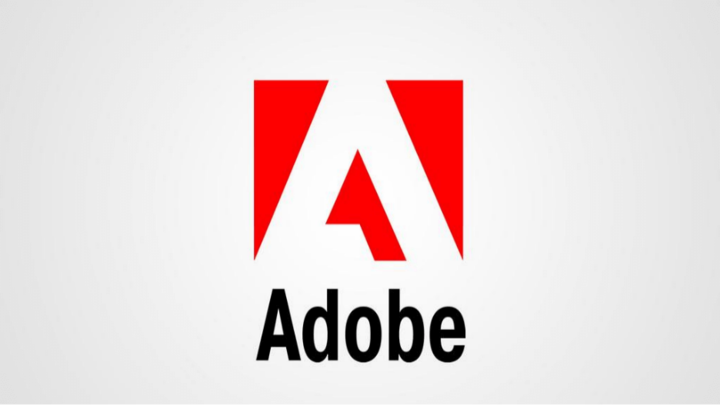
V. Risks and Opportunities
A. Possible Risks Encountered by Adobe
As an investor or trader interested in Adobe, it is imperative to remain cognizant of any potential risks that may confront the company. A significant risk factor is the potential competition from alternative ecommerce and workflow platforms, as well as artificial intelligence competitors such as Apple, Amazon, NVIDIA, Google, and Microsoft. Furthermore, Adobe encounters competition from metaverse platforms, including but not limited to NVIDIA, Meta, Microsoft, Roblox, and Unity Software. However, Adobe's focus on innovation and customer experience has allowed it to maintain a strong market position. Adobe's strong brand recognition, loyal customer base, and continuous investment in R&D also serve as barriers to entry for competitors. Additional factors that warrant consideration are the potential effects of economic downturns on demand, pricing pressures, security concerns, and obstacles associated with transitioning to novel subscription models in certain markets.
B. Opportunities For Growth And Expansion
Although there may be inherent risks, Adobe has the potential for growth and expansion. A significant opportunity lies in enhancing the market penetration of flagship products such as Photoshop and Acrobat. Furthermore, there exists a possibility for development in nascent products such as analytics and marketing tools, along with diversification into untapped customer segments. Adobe has the potential for international expansion, given its established foothold in numerous global markets. Adobe is strategically positioned to leverage technological advancements and evolving consumer preferences in the future. The company has the potential to expand its operations into emerging areas like virtual and augmented reality.
VI. How to Invest in Adobe Stock
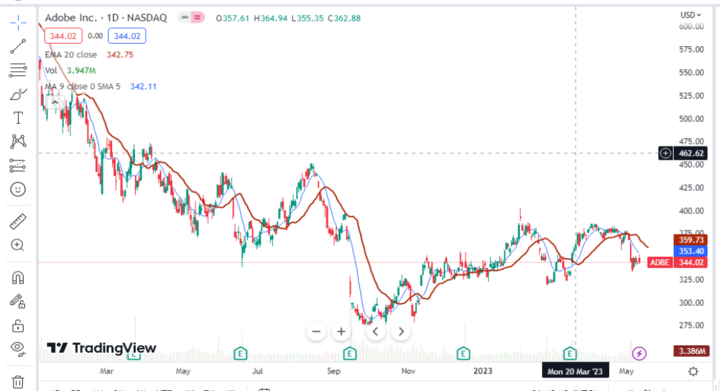
A. Three Ways to Invest in Adobe Stock
As an investor, there are several ways you can invest in Adobe stock, including holding its shares, trading options, and using Contracts for Difference (CFDs).
Holding Adobe Shares:
You can purchase Adobe shares and hold them in your portfolio as a long-term investment. This approach is relatively straightforward and can be ideal for investors who believe in Adobe's long-term growth potential.
Trading Options:
Another way to invest in Adobe stock is through options trading. Options give you the right, but not the obligation, to buy or sell a specific stock at a predetermined price within a certain time frame. This approach can be more complex than buying shares directly, and it may require a higher level of knowledge and experience.
CFD Trading:
CFD trading is a popular way to invest in Adobe stock because it allows you to speculate on the price movements of the stock without actually owning the shares. CFDs are derivatives that enable you to trade on margin, which means you only need to deposit a small percentage of the total trade value to open a position. This approach can offer more flexibility and leverage compared to other investment methods.
B. Why Trade Adobe Stock CFDs with VSTAR
At VSTAR, various benefits are offered to traders looking to invest in Adobe stock through CFDs. These benefits include:
● Low fees and commissions:
VSTAR offer competitive trading fees and commissions, so you can keep more of your profits.
● Leverage and margin trading:
VSTAR’s platform allows you to trade on margin, which means you can open larger positions than you would be able to with traditional investments.
● 24/7 trading:
VSTAR allows you to trade Adobe stock CFDs 24/7, giving you more flexibility to take advantage of market opportunities.
If you're interested in investing in Adobe stock, now is a great time to start. With VSTAR, you can open an account and start trading Adobe stock CFDs in just a few clicks. Sign up today and start taking advantage of our low fees, advanced trading tools, and 24/7 trading.
VII. Conclusion
Congratulations, you have now learned all about Adobe stock, including its history, performance, and future prospects. By analyzing the key drivers of Adobe's stock price, potential risks and opportunities, and different ways to invest in the company, you are now equipped with the knowledge and tools to make informed investment decisions. Whether you choose to hold Adobe shares, trade options, or trade CFDs, remember to always do your research and make investment decisions based on your own risk tolerance and financial goals. With VSTAR, you can trade Adobe stock CFDs and take advantage of benefits such as leverage and flexibility. So what are you waiting for? Sign up today and start trading Adobe stock with VSTAR!
